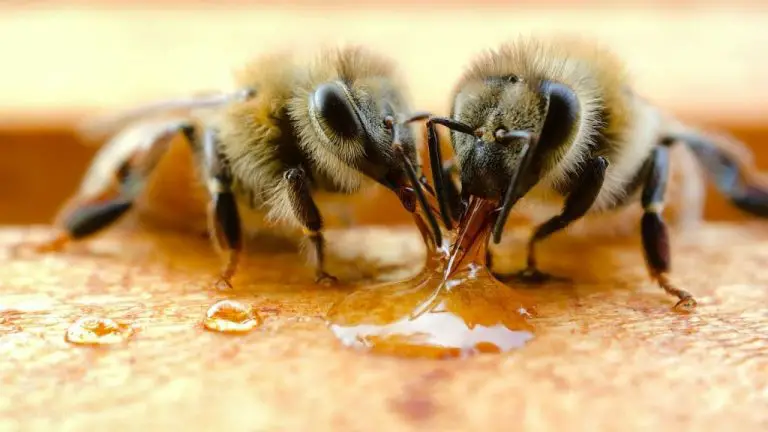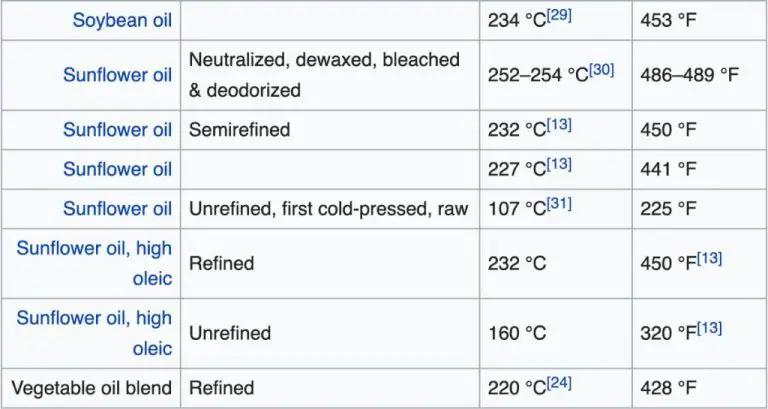What Is A High Melting Temperature Wax?
What Are High Melting Temperature Waxes?
High melting temperature waxes are defined as waxes with melting points above 60°C (140°F). They are characterized by their ability to maintain their structure and shape at higher temperatures compared to regular waxes like paraffin or beeswax, which have melting points below 60°C.
The key difference between high melting temperature waxes and regular waxes is their molecular weight. High melting temperature waxes have much larger molecules, resulting in stronger intermolecular forces and more stable crystal structures. This gives them the ability to withstand higher temperatures before melting (Patents).
Some of the unique properties of high melting temperature waxes include:
- Higher hardness and durability
- Better high temperature stability
- Low thermal expansion
- Good chemical resistance
- Low viscosity when molten
Common Types
There are several common types of high melting temperature waxes used in various applications:
Paraffin Wax
Paraffin wax is a petroleum-based wax made from the sludge or bottoms of refined crude oil. It has a melting point range of 115-142°F (46-61°C) depending on the type and grade [1]. Paraffin wax is inexpensive, readily available, and has excellent thermal properties. It can withstand high temperatures without breaking down. The downsides are that paraffin wax is not biodegradable or from a renewable resource.
Microcrystalline Wax
Microcrystalline wax is also petroleum-based and made from the residual heavy fraction after petrolatum distillation. It has a very high melting point range of 145-195°F (63-91°C) depending on the grade [2]. Microcrystalline waxes have high viscosity, adhesion, and thermal stability. However, they are non-renewable and not environmentally friendly.
Beeswax
Beeswax is a natural wax made by honey bees. It has a melt point around 144-149°F (62-65°C) [3]. Beeswax burns longer and cleaner than paraffin with less dripping. It is renewable and biodegradable. The downside is beeswax is relatively expensive compared to synthetic waxes.
Melting Points
The melting point of a high melting temperature wax refers to the temperature range at which the wax transitions from a solid to a liquid state. This is an important property, as the melting point determines the maximum temperature a wax can withstand in various applications before losing its solid structure.
Typical melting temperature ranges for common high melting point waxes are 145-195°F (63-91°C) for microcrystalline waxes, 144-149°F (62-65°C) for beeswax, and 135-145°F (57-63°C) for paraffin waxes. The melting point is measured by gradually heating a sample of the wax and identifying the specific temperature range where it transitions from solid to liquid.
Key factors that influence wax melting points include the length of the hydrocarbon chains, branching of the chains, purity, and presence of additives. Longer hydrocarbon chains with less branching lead to higher melting points. Refining processes that remove impurities also increase melting temperature. Additives like polymers can further raise the melting point of a wax.
Manufacturing Process
High melting temperature waxes are extracted from natural sources or synthesized with petroleum distillates. Natural waxes like beeswax and carnauba wax are extracted directly from bee hives and the leaves of palm trees respectively. These natural waxes undergo a refining process to remove impurities.
Synthetic waxes like paraffin wax are produced from petroleum through the fractional distillation of crude oil. The distilled fractions are then further refined through processes like hydrocracking and hydrotreating to produce pure paraffin wax.
Microcrystalline waxes are also derived from petrochemicals. They undergo further processing called isomerization and crystallization to give them a higher melting point and hardness compared to paraffin wax. Advanced manufacturing techniques allow companies to customize the melting point, viscosity and other properties of synthetic waxes.
The choice of extraction and manufacturing process affects the purity, quality and performance characteristics of the final high melting point wax product.
Applications
High melting temperature waxes have a wide range of applications across major industries. Some of the most common uses include:
Candles – Beeswax in particular is commonly used to make candles due to its high melting point of 145°F. This allows candles made from beeswax to burn longer and brighter. Soy wax, with a melting point of 115-125°F, is another popular candle wax.

Polishes – Waxes like carnauba wax (melting point of 180-187°F) are used in car polishes and wood polishes. The high melt point allows the wax to form a protective coating.
Lubricants – Paraffin wax, with a melting point of 115-150°F, is used as a lubricant agent for PVC. The high temperature resistance prevents the wax from melting off the PVC over time.
Cosmetics – Beeswax is used in cosmetic products like lip balms and lotions. Its high melting point gives it stability in storage and use.
The unique high melting points of these waxes make them suitable for applications that require heat resistance and stability. Their versatility across many major industries demonstrates why high melt waxes remain commercially invaluable.
Benefits of High Melting Temperature Waxes
High melting temperature waxes offer several key benefits that make them useful for various industrial and commercial applications:
Thermal Stability: Waxes with high melting points can withstand much higher temperatures before melting. This makes them ideal for applications that involve heat exposure such as metal lubricants, hot melt adhesives, investment casting, and more (source: https://www.khonorwax.com/overview-of-high-melting-point-paraffin-wax.html). The high melting point allows the wax to retain its hardness and structure at elevated temperatures.
Hardness: High melting point waxes tend to be harder and more rigid at room temperature compared to low melting point waxes. This increased hardness grants durability and structure for applications like candlemaking, surfboard wax, dental wax, and modeling/sculpting (source: https://blendedwaxes.com/blog/wax-melting-point-factors/). The hardness allows the wax to hold its shape in use.
Durability: The hardness and thermal stability of high melting point waxes make them very durable. They can withstand friction, pressure, impacts, and heat while maintaining their structure. This durability lends itself useful for industrial lubricants, plastic processing, mold release, and surface coatings (source: https://dongkeunited.com/portfolio-item/high-melting-point-paraffin-wax/). High melting waxes resist wearing down in tough applications.
Limitations of High Melting Point Waxes
While high melting point waxes have several advantages, they also come with some downsides and limitations to consider:
Cost – Waxes with higher melting points like beeswax tend to be more expensive than lower melting point waxes like paraffin due to scarcity of supply. The manufacturing process to produce high melt point waxes also adds to the cost.
Availability – Some waxes like cetyl alcohol wax can be harder to source dependably compared to more common waxes. The limited availability can make high melt waxes impractical for large scale production.
Performance Issues – The higher melting point can make some applications more difficult. For example, blending with oils or other ingredients may be trickier if there is a large gap between melting points. The wax may also become too brittle and prone to cracking at room temperature.
Overheating Risk – Care must be taken to not overheat these waxes significantly above their melting point, as it can cause degradation of properties. Proper temperature control is critical when working with high melt waxes.
As with any material, the specific needs and constraints of the application should be weighed against the advantages and limitations of high melting point waxes.
Grades & Standards
The wax industry has established standard grades for high melting temperature waxes based on their melting point ranges. These grades help categorize waxes and ensure quality consistency across different manufacturers and applications.
For paraffin waxes, common grades include low (125-135°F), mid (135-145°F) and high melting (145-165°F). Microcrystalline waxes are categorized into medium (145-170°F) and high (170-195°F) grades. Scale waxes with melting points above 190°F are also produced.
Industry standards help define test methods and specifications for these waxes. The ASTM D395 method covers testing the melting point of petroleum waxes, while the D1321 method defines needle penetration hardness. Food and cosmetics grade waxes must also meet FDA regulations for purity.
Key certifications like NSF/ANSI 51 for food equipment and NSF/ANSI 169 for metalforming lubricants verify that waxes are manufactured under proper quality procedures for safety. Kosher and Halal certifications ensure suitability for religious purposes.
Latest Advancements
There have been some exciting developments in high melting point waxes in recent years driven by research and innovation. Companies have been focused on improving performance and properties through advanced manufacturing techniques and novel formulations.
Some key advancements include:
- Development of ultra-pure FT waxes with precisely controlled carbon chain lengths resulting in improved thermal stability and higher melting points up to 100°C.
- Creation of custom blends by mixing synthetic and natural waxes to optimize properties like hardness, flexibility, and viscosity.
- Use of modern catalysts and reactors to produce waxes with lower residual ash content.
- Incorporation of nanomaterials like carbon nanotubes to enhance thermal conductivity and mechanical strength.
- Leveraging computational modeling and simulation tools to design novel wax crystal shapes and structures.
These improvements allow high melting point waxes to meet the evolving demands across industries like adhesives, coatings, rubbers, and polymers. With continued R&D investment, further enhancements in performance, quality and cost-effectiveness can be expected in the future.
Future Outlook
The future looks bright for high melting point waxes. According to a recent report, the high melting point Fischer-Tropsch synthetic wax market is projected to achieve a valuation in the multimillion-dollar range by 2030 (https://www.linkedin.com/pulse/high-melting-point-fischer-tropsch-synthetic-mnpye). This growth will likely be driven by increasing demand from end-use industries like adhesives, rubber, cosmetics, and more.
Sustainability is expected to be a major trend shaping the wax industry going forward. Consumers want more sustainable ingredients, which is driving innovation around renewable feedstocks and production methods with a lower carbon footprint (https://klinegroup.com/articles/sustainability-in-the-wax-industry/). Developments like producing waxes from waste plastics or bio-based sources may become more prevalent.
Researchers continue exploring new production methods and feedstocks to create high melting point waxes with improved properties. There is also interest in enhancing performance by using additives or blending different waxes. Overall, the future looks promising for these versatile materials that are used across so many applications.





